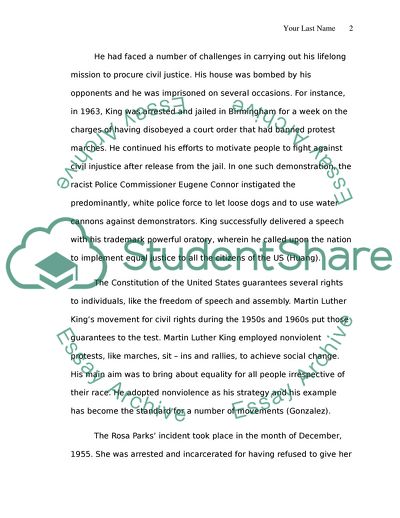Cite this document
(Martin Luther Kings Strategy for Gaining Civil Rights Term Paper - 1, n.d.)
Martin Luther Kings Strategy for Gaining Civil Rights Term Paper - 1. Retrieved from https://studentshare.org/history/1711652-how-would-you-characterise-martin-luther-kings-strategy-for-gaining-civil-rights-in-what-ways-did-it-differ-from-the-approach-espoused-by-malcolm-x-or-stokely
Martin Luther Kings Strategy for Gaining Civil Rights Term Paper - 1. Retrieved from https://studentshare.org/history/1711652-how-would-you-characterise-martin-luther-kings-strategy-for-gaining-civil-rights-in-what-ways-did-it-differ-from-the-approach-espoused-by-malcolm-x-or-stokely
(Martin Luther Kings Strategy for Gaining Civil Rights Term Paper - 1)
Martin Luther Kings Strategy for Gaining Civil Rights Term Paper - 1. https://studentshare.org/history/1711652-how-would-you-characterise-martin-luther-kings-strategy-for-gaining-civil-rights-in-what-ways-did-it-differ-from-the-approach-espoused-by-malcolm-x-or-stokely.
Martin Luther Kings Strategy for Gaining Civil Rights Term Paper - 1. https://studentshare.org/history/1711652-how-would-you-characterise-martin-luther-kings-strategy-for-gaining-civil-rights-in-what-ways-did-it-differ-from-the-approach-espoused-by-malcolm-x-or-stokely.
“Martin Luther Kings Strategy for Gaining Civil Rights Term Paper - 1”. https://studentshare.org/history/1711652-how-would-you-characterise-martin-luther-kings-strategy-for-gaining-civil-rights-in-what-ways-did-it-differ-from-the-approach-espoused-by-malcolm-x-or-stokely.


